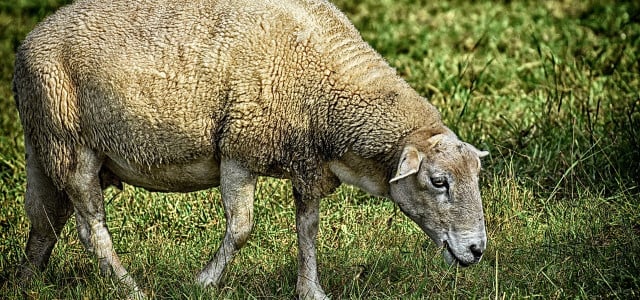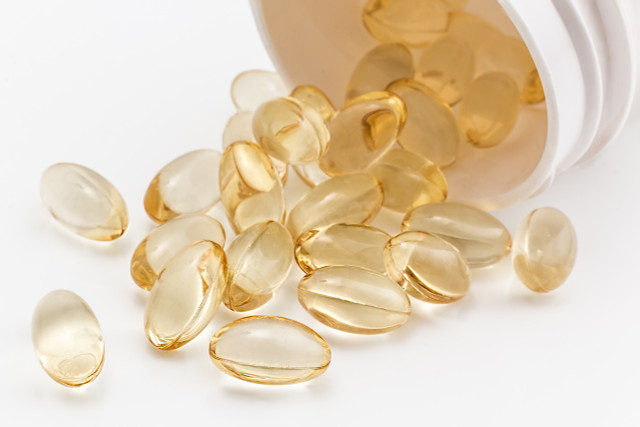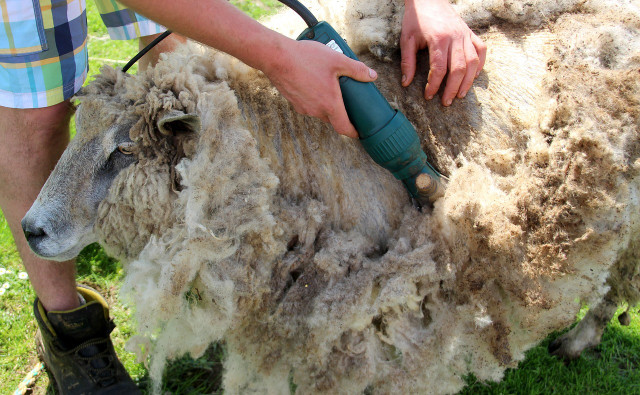
Vitamin D from sheep’s wool could meet the needs of a vegetarian diet. Nevertheless, this solution is not ideal – and not vegan either. You can read why this is so here.
Vitamin D can be obtained from the wool of living sheep. Similar to honey or cheese, the vitamin obtained in this way is suitable for a vegetarian diet because no animals have to die for it. It could therefore be a real alternative to cover the vitamin requirements of a plant-based diet.
Vitamin D is mainly contained in foods of animal origin. In a vegan diet, mushrooms, such as mushrooms or chanterelles, are almost the only possible natural sources. For this reason, adequate vitamin D supply is a critical point that you should consider when following a purely plant-based diet. A vitamin D deficiency over a long period of time can impair the stability of the bones or weaken the immune system.
To ensure supplies, food brands often add vitamin D to plant-based products. For example, margarine or plant drinks can be enriched with the vitamin. Another option is vitamin supplements.
The problem with this is that with the addition of animal vitamin D, plant-based foods are obviously no longer vegan. In this dilemma, vitamin D from sheep’s wool comes into play.
Vitamin D from sheep’s wool – vegetarian, but not vegan

(Photo: CC0 / Pixabay / stevepb)
Vitamin D is the generic term for two variants of the vitamin. Above all, the origin makes an important difference in the plant-based diet:
-
Vitamin D3 (cholecalciferol) – It is always of animal origin. The vitamin is found in the liver oil of fish such as herring or mackerel, in egg yolks or in raw milk cheese.
-
Vitamin D2 (ergocalciferol) – This vitamin is found in plants and fungi, such as mushrooms, chanterelles and certain lichens. A study also classifies cocoa beans as a possible source of vitamin D2.
With a plant-based diet, you mainly consume vitamin D2. However, studies point in the direction that the body cannot absorb this vitamin D variant as well as animal-derived vitamin D3.
The wool fat lanolin in sheep’s wool contains precisely this vitamin D3. Wool fat is a by-product of sheep shearing. According to the definition of vegetarian foods, they may contain lanolin. On the other hand, they are prohibited in vegan foods. Only purely plant-based foods can be called vegan. This applies to the ingredients as well as to the substances used in production.
According to the definition, vegetarian vitamin D may also come from sheep’s wool and thus contain the easily digestible vitamin D3. Only vitamin D2 can be called vegan vitamin D due to its plant origin.
Vitamin D is the sunshine vitamin

(Photo: CC0 / Pixabay / carlaborella)
How much vitamin D does the body actually need? According to the German Society for Nutrition, the recommended daily requirement is 20 micrograms a day. However, this information also includes the amounts of vitamin D that the body can produce itself.
The medicine portal Netdoktor explains that skin can convert cholesterol into vitamin D under the influence of UV radiation in sunlight. The Robert Koch Institute (RKI) points out that the body can produce 80 to 90 percent of the vitamin itself. He only needs vitamin D from food for the remaining ten to 20 percent.
Strictly speaking, vitamin D does not correspond to the conventional definition of vitamins. The term stands for nutrients that the body cannot produce itself. The supply of the vital vitamins occurs exclusively through food.
How much vitamin D your body can produce itself depends on whether you exercise a lot outdoors, on your skin type, clothing or the level of sun protection factor, as well as the seasonally different levels of sun exposure.
The Apotheken-Umschau reports that between five and 25 minutes of sun exposure is enough for the skin to produce vitamin D.
Conclusion: Vitamin D from sheep’s wool – possible, but not ideal

(Photo: CC0 / Pixabay / Myriams Photos)
The supply of vitamin D is not easy for vegans. Vitamin D3 comes from animals and is therefore out of the question for a vegan diet. The plant-based variant, on the other hand, cannot be optimally processed by the human organism.
However, the vegetarian solution with vitamin D3 from sheep’s wool also raises ethical concerns. The animal protection organization PETA points out, for example, that sheep often have to suffer when keeping and shearing their wool. In addition, sheep farming causes environmental problems on a large scale. The herds eat away at the turf, leaving the soil deserted. The sheep are also given baths containing pesticides to protect them from parasites. In order not to support animal suffering and environmental problems, you should therefore prefer wool from sustainable animal husbandry.
So what else can you do besides vitamin supplements to adequately cover your vitamin D needs? Above all, PETA advises vegans to be outdoors as regularly as possible. However, always think about adequate sun protection for your skin type.
- For example, you can go for a walk outside during your lunch break (but still make sure you have enough sunscreen).
- Ride your bike or walk to do some small shopping.
- In winter, when the sun isn’t as strong, a cup of hot cocoa or dark chocolate can also help you meet your vitamin D needs.
Read more on Techzle.com:
- Fast vegan recipes: Vegan cooking for those in a hurry
- Öko-Test vitamin D preparations: Often dosed far too high
- Vegan food pyramid: How to eat healthy